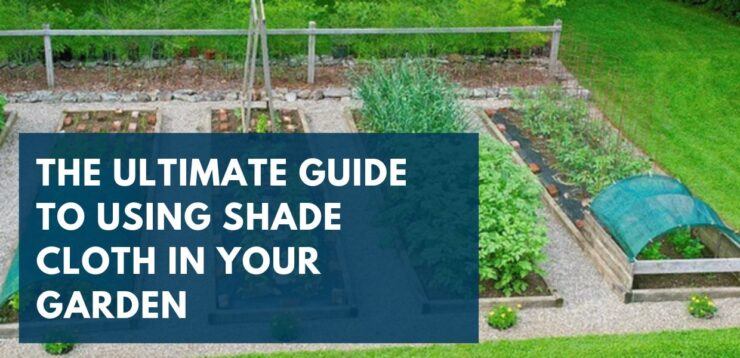Shade netting is a handy type of cloth made from materials that are woven or tied together, mainly used to give plants a break from too much sun and warmth. But, its use goes way beyond just offering a cool spot. In the world of plant care and gardening, thinking outside the box with shade netting can really boost how well plants grow, keep bugs at bay, and even save water. Let’s dive into seven clever ways to use shade netting for keeping plants safe, showing just how versatile it really is.
1. Getting to Know Shade Netting and What It’s Made Of
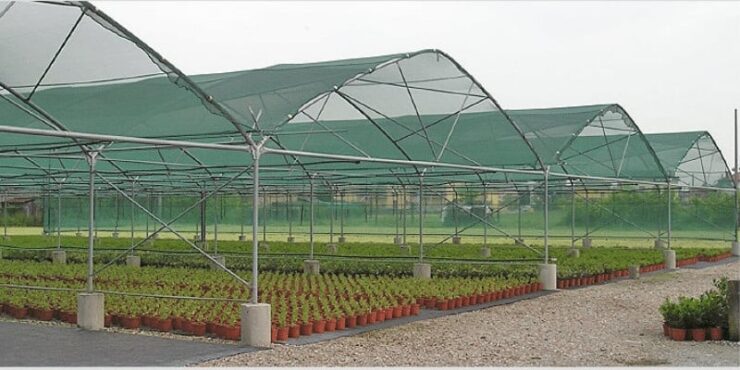
First off, it’s important to get the lowdown on what shade netting is all about. This netting comes in different thicknesses, which can block out anywhere from a little to almost all light. What it’s made of—like polyethylene, polyester, or even metal—plays a big part in how tough it is, how well it reflects light, and how cool it keeps things underneath. Picking the right shade netting means thinking about what your green buddies need, the weather in your area, and how much shade you’re aiming for.
2. Making Special Little Environments for Sensitive Plants
One super cool use for shade netting is making little special environments, or microclimates, for plants that need a bit more TLC or are getting used to a new spot. By putting shade netting in just the right places, you can tweak how much light, heat, and moisture plants get, making the perfect little bubble for them to thrive in. This trick is especially handy in places with really strong sun or where the temperature jumps around a lot, making it possible to grow a bigger variety of plants. Also, you have probably wondered what percentage shade cloth should i use. We suggest you research that before you make special environments for your plants.
3. Teaming Up with Nature to Fight Off Pests
Shade netting can be a big help in keeping unwanted bugs away from your plants. Acting like a shield, it keeps out pests like aphids, whiteflies, and some beetles. Plus, the cooler, dimmer area under the netting isn’t as welcoming for bugs that love the heat and bright sun. This way of keeping pests in check means you don’t have to rely as much on bug sprays, leading to a happier, healthier garden.
4. Helping Bees and Boosting Plant Health
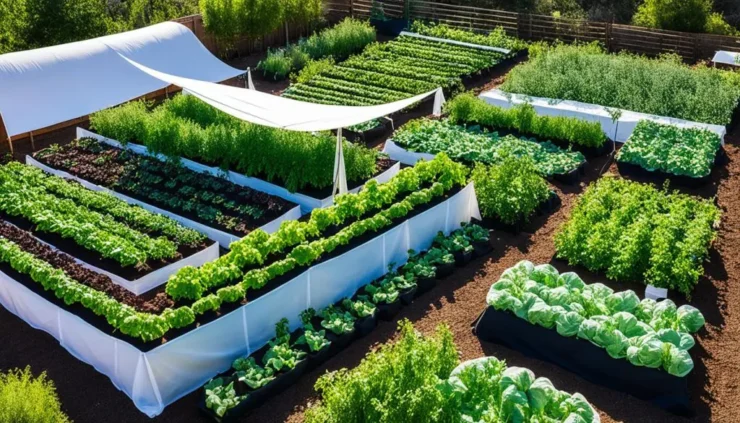
Here’s something neat: shade netting can also help with pollination. Bees and other pollinators aren’t fans of extreme heat and glaring sun. A gentler environment under the netting means they’re more likely to stop by, helping your plants get pollinated. Also, plants that aren’t stressed out from too much sun are in better shape to flower and bear fruit, meaning you get more goodies from your garden.
5. Saving Water the Smart Way
In the big picture of keeping gardens green, saving water is key, and shade netting can make a big difference. By keeping the ground and leaves cooler, it slows down how fast water evaporates or gets sucked up by the plants, so they stay quenched longer. This is a win-win, saving water and keeping your plants happy, especially when the sun is at its meanest. For places that don’t get much rain, using shade netting can be a real game-changer.
6. Guarding Against Rough Weather
Shade netting isn’t just for blocking sun; it can also guard your plants against other rough weather like strong winds and hail. In windy spots, setting up shade netting just right can slow down the wind and stop it from messing with delicate plants. And when hail comes down, the netting is there to protect your plants, keeping leaves and blooms safe. This all-around protection helps your garden stay beautiful and thriving, even when the weather doesn’t play nice.
7. Stretching Out the Growing Season
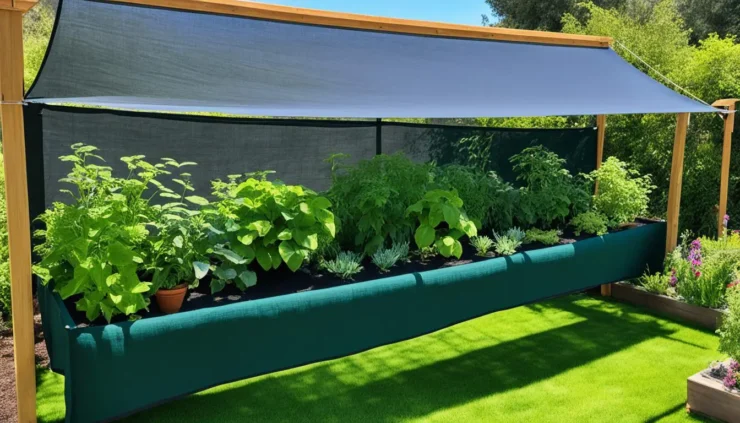
Gardeners looking to get the most out of their growing time can really benefit from cleverly using shade netting. It can help manage temperatures and protect plants from early chills or late frosts, letting you start planting sooner in spring and keep harvesting later into autumn. This is especially great for plants that don’t like sudden temperature changes, giving them a steadier, more controlled environment to grow in.
8. Mixing Style and Function in the Garden
Shade netting isn’t just practical; it can also add a splash of style to your garden. Using colored netting can brighten up your space, making it look great while still keeping your plants safe. And when used with things like trellises, pergolas, and gazebos, shade netting fits right in with your garden’s look, making it both pretty and practical.
9. Easing Young Plants into the Great Outdoors
The early days of a plant’s life are crucial, and young seedlings are super sensitive to their surroundings. Using shade netting creatively can help these little guys get used to being outside in a gentle way. By creating a light, dappled shade, it’s like mimicking the natural protection of a forest canopy. This softer start can reduce the shock seedlings might feel moving from a cozy indoor spot or greenhouse to the full blast of outdoor sun. This is a big help for gardeners starting seeds inside or in greenhouses, making sure the plants are strong and ready for transplanting.
10. Making Fruits and Veggies Even Better
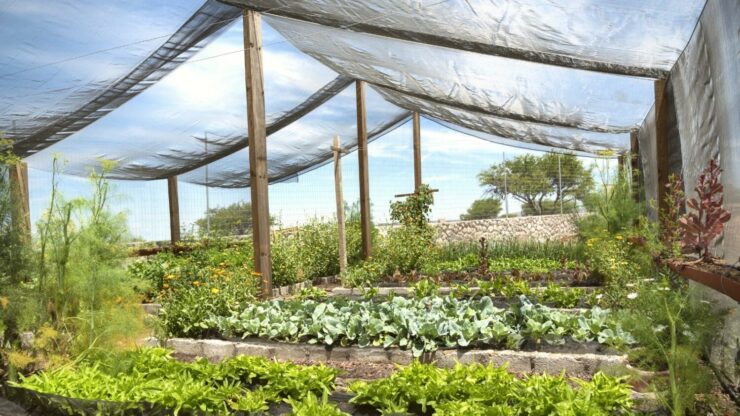
Shade netting can also be a secret weapon for making your fruits and veggies look and taste their best. Too much direct sunlight can cause problems like sunscald, which messes with how they look, their nutrition, and even their flavor. By controlling the sunlight, shade netting keeps these problems at bay, leading to fruits and veggies that are evenly colored, have a great texture, and taste amazing. This is especially helpful for plants that don’t like too much sun or are grown in really sunny places. Plus, it helps avoid stress-related issues in plants, like leafy greens bolting or tomatoes cracking, so you get more top-notch produce.
Wrapping It Up
Shade netting is a real gem for anyone who loves gardening, offering so many ways to keep plants safe and sound. From making cozy spots for plants to saving water and extending the growing season, its clever uses make gardening more sustainable and fruitful. As gardeners and farmers look for ways to be kinder to the environment and keep their plants happy, getting creative with shade netting offers some smart solutions. By diving into these fresh ideas, gardeners can turn their spaces into thriving havens for plants and pollinators alike.
If you need high-quality shade cloth, Qibang Netting stands out as a trusted supplier. They are experts in the field and can guide you in making the best choice for your needs.

